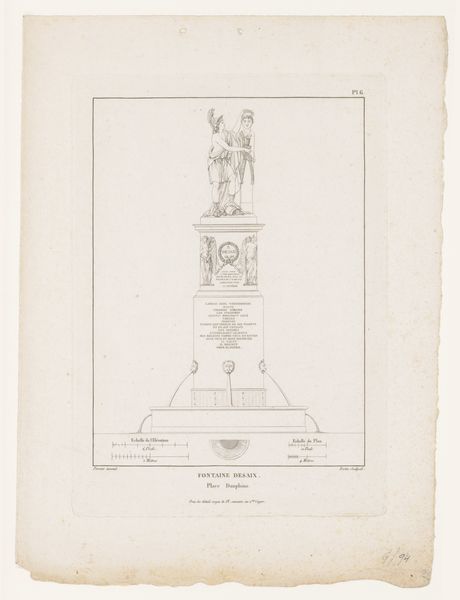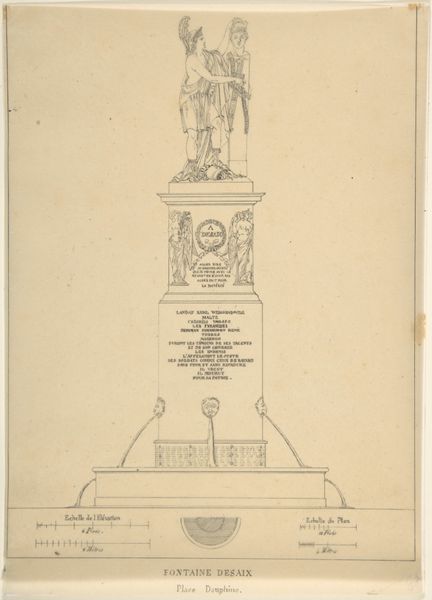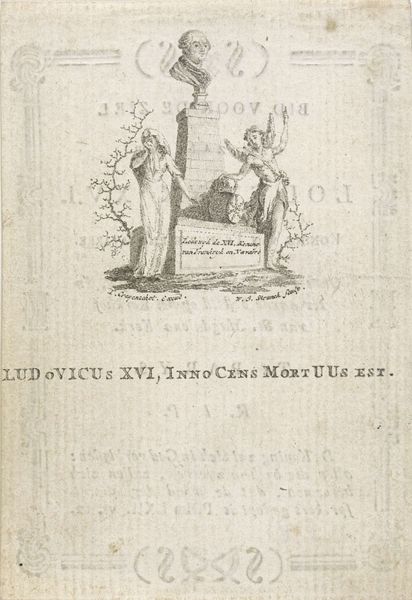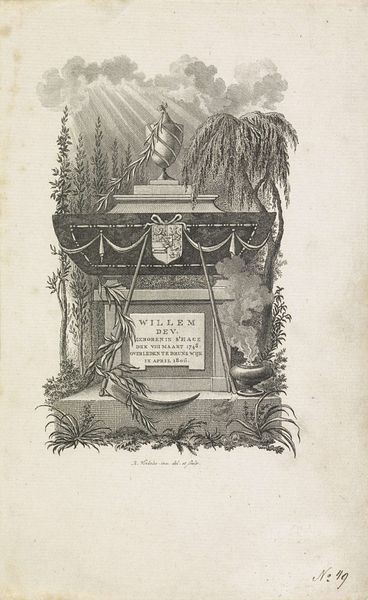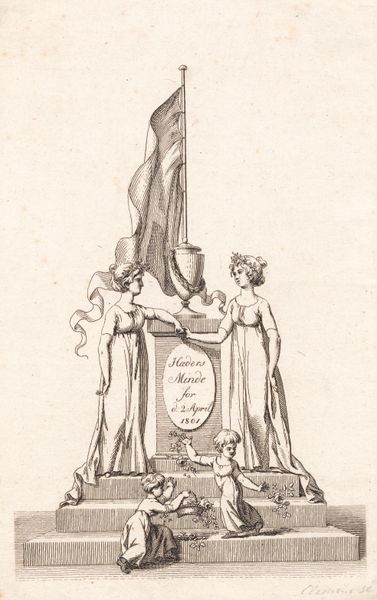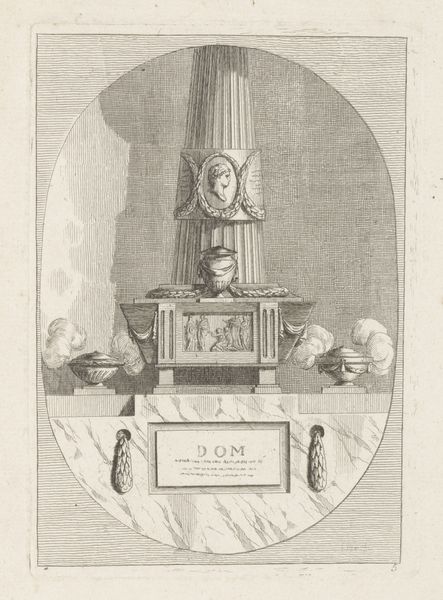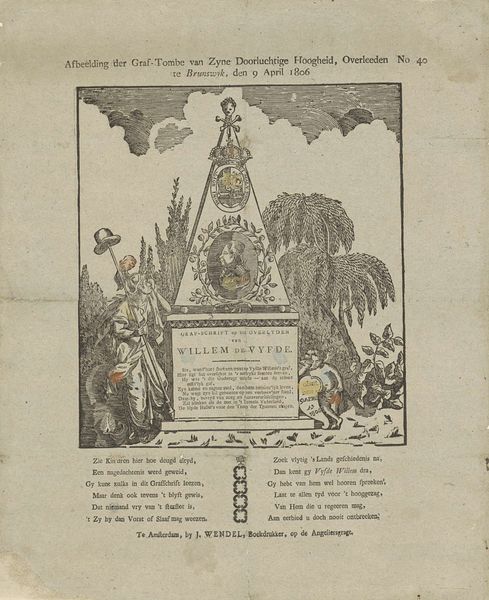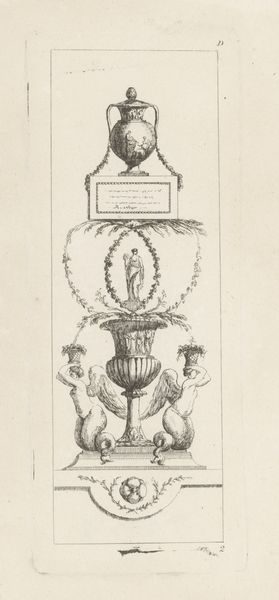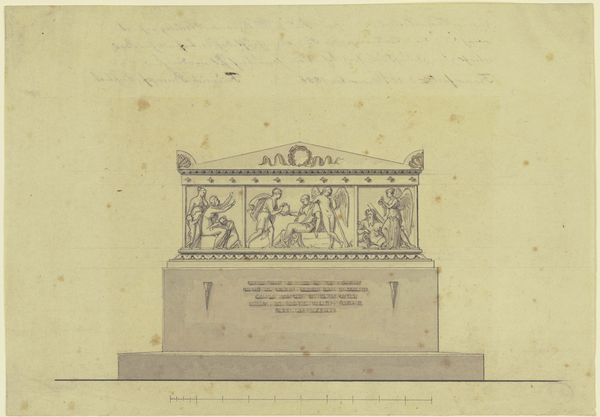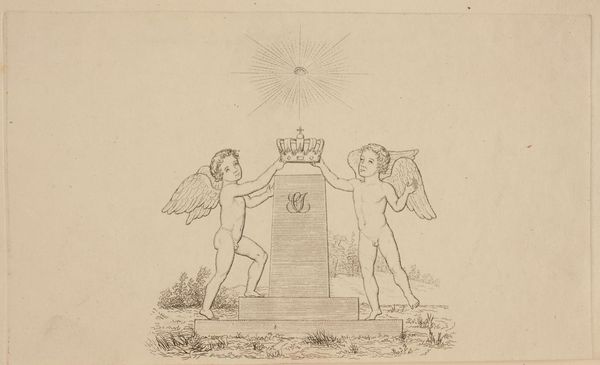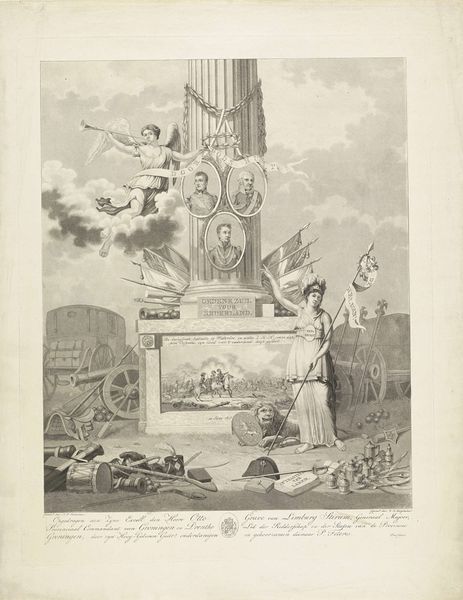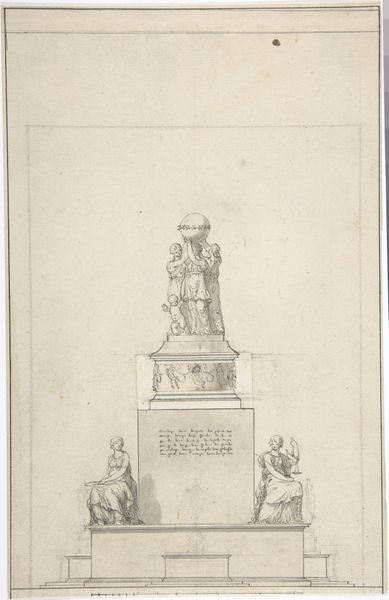
Dimensions: height 275 mm, width 215 mm
Copyright: Rijks Museum: Open Domain
Curator: What a delightfully acidic visual! We're looking at "Spotprent over de bijdragen van Indie aan de schatkist," or "Cartoon about the contributions of the Dutch East Indies to the treasury" from 1863, crafted by Johan Michaël Schmidt Crans. Editor: My first thought? I feel the bite of satire. The style looks straightforward enough—lines of ink engraving doing that neat little dance, all precise—but the whole composition makes me smile ruefully. What am I even looking at exactly? Curator: Indeed, the work is steeped in satire and orientalism. Six kneeling figures face a pedestal upon which rests a golden calf emblazoned with "f12.000.000" --12 million florins! Banners proclaim, among other sentiments, fighting over nature's enjoyment! This whole arrangement is so absurd it is very much a cartoon of the economic situation of the Dutch East Indies. Editor: So the figures represent those profiting from or beholden to colonial extraction? Are they bowing down to what could be called, in the parlance of today, economic idol worship? How perfectly scandalous. Even down to that tagline, almost snarking: "Who will be Moses and break the Golden Calf?" It hints, of course, at systemic idolatry, right? Curator: Absolutely. Notice the Romantic flourish of the piece! Schmidt Crans has subtly embedded history painting in the political message, borrowing from a recognizable and weighty context. Editor: Now that you point that out, yes! Look at the windmill depicted far off to the left! These symbols feel less about glorifying the current moment and more like a lament that subtly reveals what's broken in this colonial arrangement, though I see why we must contextualize with orientalism, since the symbolism isn't a direct comparison of Indonesia to Europe and uses certain popular romantic tropes. Even that touch of detail, with the budding flowers at the base—a sad little stand of life. They whisper that amidst such economic fervor, beauty gets neglected. Curator: I fully agree. Its crude form, that contrasts with what the artist actually depicts, allows for layers of interrogation that continue to be insightful. What begins as a pointed political statement broadens into something enduringly potent. Editor: Agreed. And while it's a stark picture, the cartoon brings forth so many issues still in our modern times. A powerful reflection using very straightforward but cutting techniques.
Comments
No comments
Be the first to comment and join the conversation on the ultimate creative platform.
